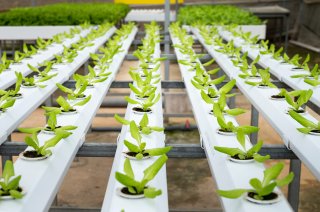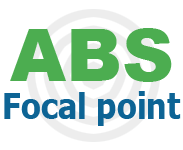
What to do as a user of genetic resources?
- If possible, identify a partner organisation or provider in the country from which you wish to obtain genetic resources. Gain information on the conditions that are likely to apply to access and use. Standard conditions probably apply to genetic resources held in a public collection. This will not be the case if you wish to collect genetic resources from the wild or directly from farmers, markets or local traders.
- Check, if possible with your counterparts, if the country stipulates that permission must be obtained to access and use its genetic material. If this is required, it will mostly be in the form of prior informed consent (PIC). For many countries, information on access legislation is available on the ABS Clearing-House website. The national focal point (NFP) of a country is responsible for providing information on legislation, rules and procedures governing access to genetic resources from that country. Names and contact details of NFP are available on the ABS Clearing-House website and on the website of the Convention on Biological Diversity (CBD).
- Identify the competent national authority (CNA) of the country from which you wish to obtain genetic resources. The CNA is responsible for providing PIC. There may be more than one CNA in a country. Contact details are available on the ABS Clearing-House website. Names and contact details of CNA are also available on the website of the Convention on Biological Diversity (CBD).
- Present your plan to the CNA of the providing country and request PIC. You will be expected to have negotiated or negotiate mutually agreed terms (MAT) with the provider or providers, including academics and/or local communities. The CNA will then approve or reject the MAT, on the basis of the instructions it has received. Such approval is often not required for access to public gene banks or other public collections.
- Make sure you obtain PIC and MAT, and ask the CNA to inform the CBD of this so that an internationally recognised certificate of compliance can be lodged with the ABS Clearing-House. Document these agreements carefully. If this is not feasible, go through the steps laid down in European Regulation 511/2014, Article 4, paragraph 3 which specifies the information you need to collect to fulfil your obligations in this field.
- Use the genetic resources obtained only in accordance with the conditions agreed with the providing country, and carefully document the use you make of them.
- Submit a due diligence declaration when you receive a public or private grant for activities in which genetic resources are utilised in the sense of European Regulation 511/2014. You must also submit a due diligence declaration prior to marketing a product for which genetic resources have been utilised in the sense of European Regulation 511/2014. Due diligence declarations can be submitted through the EU-wide tool DECLARE. You can find more information on due diligence declarations in Implementing Regulation 2015/1866, Articles 5, 6 and 7.
Access in the Netherlands
Access to and use of materials occurring in situ (‘in nature or in the field’, so not in a collection) in the Netherlands do not in principle require PIC or MAT. However, nature protection law may apply to species or habitats. The Standard Material Transfer Agreement (SMTA) usually applies to plant-genetic resources for food and agriculture held in public collections.
Plant breeders' rights and commercial plant varieties
When a commercial plant variety has been legally placed on the EU market, further use of this variety in plant breeding does not fall within the scope of the EU ABS Regulation, as the subsequent breeder relies on a new and different genetic resource, different from the initial genetic resource. This includes new varieties that are protected by a plant variety right according to the UPOV Convention, including under Regulation (EC) 2100/94 on Community Plant Variety Rights.
Consequently, no due diligence obligation applies, and no due diligence declaration is required with regard to breeding activities involving the use of varieties that have been legally commercialised in the EU and/or protected by a plant variety right according to the UPOV Convention inside or outside of the EU.
However, provider countries outside of the EU may have national access legislation for their genetic resources, which may differ from the EU interpretation. This means that if commercial plant varieties are outside the scope of the EU ABS Regulation, they may be in scope of national access legislation of the provider country. Check the national legislation, or you may run into problems with the authorities of the country concerned.
For more information, see section 8.4 of the Guidance’s Annex II.
More information
For further details, read European Regulation 511/2014, Implementing Regulation 2015/1866 and the Guidance document on the scope of application and core obligations of Regulation (EU) No 511/2014. A selection of resources relevant to Access and Benefit-Sharing can be found on the page Downloads and links.
